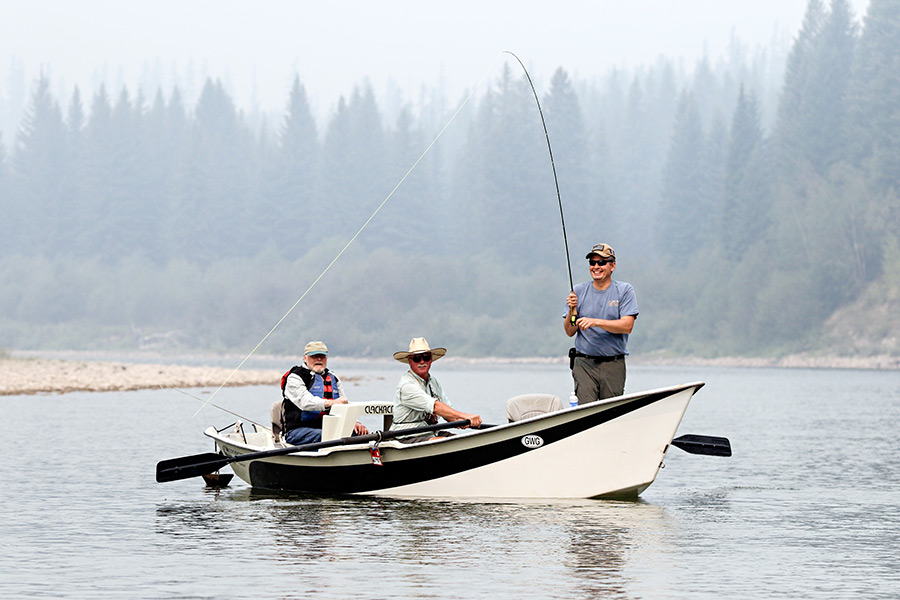Montana’s Wilderness Study Areas in Dispute
Sen. Daines’ proposal to release nearly a half-million acres of protected land receives pushback from wilderness advocates and local stakeholders
By Tristan Scott
Scrolling through the Instagram account managed by U.S. Sen. Steve Daines, a conservative Republican from Bozeman, it’s clear he’s hewed a well-established groove in the firmament of Western outdoors pursuits.
Populating the first-term senator’s social media feed are pictures of him on backpacking trips deep in the Beartooth Mountains; him bagging ungulates on sunbaked foothills with his wife, Cindy; the family’s mini-Aussies, Reagan and Ruby, chasing mice; and Daines plucking native cutthroat trout from the Yellowstone River. The pictures often bear captions championing public-land access as a cornerstone value in Montana, and they leave behind the politicking inherent to Daines’ work in Washington, D.C.
Daines’ views on public-land access have led him to call for opening up nearly 450,000 acres of federally protected parcels — currently managed by the U.S. Forest Service as wilderness study areas — to a suite of new uses, including logging, grazing and motorized use.
To leave them off-limits to those expanded uses is, according to Daines’ logic, anathema to the spirit of public lands, a philosophy that led him to sponsor the Protect Public Use of Public Lands Act, which would release five Wilderness Study Areas he says have impeded Montanans’ ability to use the lands for decades.
“As a fifth-generation Montanan and avid outdoorsman, I understand how important public lands are to Montanans,” Daines said during a Feb. 7 Senate Energy and Natural Resources Committee hearing on the bill. “After 40 years of inaction from Congress, it is time to unlock our public lands and return them to the people of Montana.”
Scattered across the state, Montana’s wilderness study areas amount to more than 1 million acres. If the bill comes to fruition, it would effectively be the largest reduction in protected public lands in Montana history.
As Daines promotes the rollback as justice served on lands that have hung in limbo for decades without a wilderness recommendation from the Forest Service, wilderness advocates were blindsided by Daines’ top-down approach to jettison the wilderness study areas from federal protection without consulting a wider range of stakeholders.
Spearheaded by the Montana Wilderness Association and residents affected by the rollbacks, a campaign is gathering momentum to oppose Daines’ bill and continue furnishing protections on the five areas — the Big Snowies, the Middle Fork Judith, the West Pioneer, the Blue Joint, and the Sapphire, all of which would be vulnerable to oil and gas development, mining, and new off-road vehicle use.
At 91,000 acres, the Big Snowies area is the largest of those five, and the proposed rollback of its designation prompted Lewistown City Commissioner Dale Byerly, a Republican who voted for Daines, to wonder why the senator hadn’t held a single public hearing or townhall before he introduced the legislation.
“Why did the people of Lewistown, who would be most affected by removing protection from the Big Snowies Wilderness Study Area, only hear about his bill after it was introduced?” Byerly said. “Why hasn’t he ever come to Lewistown to talk about this proposal that could have a serious impact on the water we drink?”
Jack Kirkley, a resident of Beaverhead County living near the West Pioneers Wilderness Study Area, said he and other advocates of the protected parcel should have been given a fair and transparent opportunity to express their opposition to the measure, which Kirkley learned about on Daines’ website.
While wilderness advocates believe Daines’ bill erodes public-land protections, other user groups support it. Daines’ bill has the support of the Montana Trail Vehicle Riders Association, Backcountry Sled Patriots, Montana Mining Association, Montana Snowmobile Association, Great Falls Trail Bike Riders, Safari Club International, and the anti-wolf organization Big Game Forever.